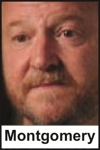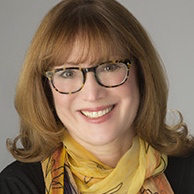Rascals case in brief
In the beginning, in 1989, more than 90 children at the Little Rascals Day Care Center in Edenton, North Carolina, accused a total of 20 adults with 429 instances of sexual abuse over a three-year period. It may have all begun with one parent’s complaint about punishment given her child.
Among the alleged perpetrators: the sheriff and mayor. But prosecutors would charge only Robin Byrum, Darlene Harris, Elizabeth “Betsy” Kelly, Robert “Bob” Kelly, Willard Scott Privott, Shelley Stone and Dawn Wilson – the Edenton 7.
Along with sodomy and beatings, allegations included a baby killed with a handgun, a child being hung upside down from a tree and being set on fire and countless other fantastic incidents involving spaceships, hot air balloons, pirate ships and trained sharks.
By the time prosecutors dropped the last charges in 1997, Little Rascals had become North Carolina’s longest and most costly criminal trial. Prosecutors kept defendants jailed in hopes at least one would turn against their supposed co-conspirators. Remarkably, none did. Another shameful record: Five defendants had to wait longer to face their accusers in court than anyone else in North Carolina history.
Between 1991 and 1997, Ofra Bikel produced three extraordinary episodes on the Little Rascals case for the PBS series “Frontline.” Although “Innocence Lost” did not deter prosecutors, it exposed their tactics and fostered nationwide skepticism and dismay.
With each passing year, the absurdity of the Little Rascals charges has become more obvious. But no admission of error has ever come from prosecutors, police, interviewers or parents. This site is devoted to the issues raised by this case.
On Facebook
Click for earlier Facebook posts archived on this site
Click to go to
Today’s random selection from the Little Rascals Day Care archives….
Click for earlier Facebook posts archived on this site
Click to go to
Today’s random selection from the Little Rascals Day Care archives….
N.C. law stacked deck against defendants
Oct. 17, 2011
The two largest ritual-abuse day-care cases – Little Rascals in Edenton and McMartin in California – bore many similarities but McMartin resulted in not a single conviction.
 I asked Mark Montgomery, who in 1995 successfully argued Bob Kelly’s case before the North Carolina Court of Appeals, why that might have been:
I asked Mark Montgomery, who in 1995 successfully argued Bob Kelly’s case before the North Carolina Court of Appeals, why that might have been:
“Each state has its own criminal laws, rules of procedure and evidence, etc. … Several features of the law in North Carolina gave prosecutors an advantage.
“First, the prosecution interviewed all the children attending Little Rascals Day Care. Most said they had seen no abuse. The law allowed the prosecution to withhold those interviews from the defense. And the defense was not allowed to interview the children. So all the jury heard were the stories of the 12 children who were the subject of indictments.
“Second, the law allowed the state’s expert witnesses to testify that they believed the children’s claims.
“Third, the defense was not allowed to conduct its own physical or psychological examinations of the children.
“Fourth, North Carolina had (and has) very liberal rules for the admission of hearsay by children in these cases. Almost anything a child says out of court can be used by the jury as substantive evidence of guilt. An effective prosecution strategy was to enlist the parents to elicit allegations of abuse. For months, parents, who were told their children had been abused, pleaded with their children to ‘disclose.’ Some eventually did. The prosecution then called the parents as witnesses to testify to what their children said, even if the children themselves did not testify.”
Parents’ gullibility ‘grounded in anxiety’
Nov. 25, 2011
“In the prototypical witch hunts in Europe and in the Massachusetts colony, the accused were often scapegoats for some calamity – disease, bad harvests, the birth of a deformed child.
 “In the witch hunts of the ’80s, there was no such injury to be avenged or repaired. There was, however, a psychological need to be fulfilled. Our willingness to believe in ritual abuse was grounded in anxiety about putting children in day care at a time when mothers were entering the work force in unprecedented numbers.
“In the witch hunts of the ’80s, there was no such injury to be avenged or repaired. There was, however, a psychological need to be fulfilled. Our willingness to believe in ritual abuse was grounded in anxiety about putting children in day care at a time when mothers were entering the work force in unprecedented numbers.
“It was as though there were some dark, self-defeating relief in trading niggling everyday doubts about our children’s care for our absolute worst fears – for a story with monsters, not just human beings who didn’t always treat our kids exactly as we would like; for a fate so horrific and bizarre that no parent, no matter how vigilant, could have ever prevented it.”
– Margaret Talbot, writing in The New York Times Magazine, Jan. 7, 2001
What is ‘appropriate indemnity’ for wrongful prosecution?

justicedenied.org
Edwin Borchard
June 21, 2016
“One of the earliest arguments for financial compensation for the wrongly incarcerated came in 1932, from the Yale law professor Edwin Borchard. In an influential book called ‘Convicting the Innocent: Sixty-five Actual Errors of Criminal Justice,’ Borchard wrote, ‘When it is discovered after conviction that the wrong man was condemned, the least the State can do to right this essentially irreparable injury is to reimburse the innocent victim, by an appropriate indemnity for the loss and damage suffered.’ He noted, ‘European countries have long recognized that such indemnity is a public obligation.’ But it would be many years before the United States began puzzling through what constituted an ‘appropriate indemnity.’ It wasn’t until the first DNA exoneration, in 1989, that most states began to seriously consider compensation.
“There is still no consensus about the value of lost time. Missouri gives exonerees $50 a day for time served, California twice that much. Massachusetts caps total compensation at $500,000. In Maine, the limit is $300,000; in Florida, it’s $2 million. The variation is largely arbitrary. ‘If there’s a logic to it, I haven’t seen it,’ Robert J. Norris, a researcher at SUNY Albany who has studied compensation statutes, told me…. Twenty states have no compensation statutes at all.”
– From “The Price of a Life: What’s the right way to compensate someone for decades of lost freedom?” by Ariel Levy in the New Yorker (April 13, 2015)
North Carolina exonerees are entitled to $50,000 for each year spent in prison, plus job training and college tuition, up to a maximum of $750,000. However, those statutes apply only to persons “granted a pardon of innocence by the Governor upon the grounds that the crime with which the person was charged either was not committed at all or was not committed by that person.”
As excruciatingly demonstrated in the case of Henry McCollum and Leon Brown, not every governor is in a hurry to enable that compensation.
![]()
APSAC to victims of its ‘misguided ideas’: Drop dead

janetrosenzweig.com
Dr. Janet Rosenzweig
Oct. 26, 2016
Janet Rosenzweig, executive director of the American Professional Society on the Abuse of Children, wasted no time kissing off my request that APSAC take responsibility for the damage done by its advocacy of the “satanic ritual abuse” day-care myth:
“On behalf of the Board of Directors of APSAC, thank you for sharing your thoughts with us. APSAC does not have a position on this issue, and has no plans to take one at this time.”
In reality, APSAC has taken a position on the issue ever since its founding.
As noted in “Advances in Social and Organizational Psychology” by Donald A. Hantula (2006):
“APSAC was founded in 1985 as a professional group of therapists concerned that some people were skeptical regarding claims in the McMartin day care satanic abuse case. At the same meeting at which APSAC was formed for professionals, ‘Believe the Children’ was formed for parents of McMartin children…. Thus, from the start, APSAC has been an advocate of the reality of satanic and sexual abuse in day care….”
As stingingly acknowledged by prosecutor Paul J. Stern, the shared history of APSAC and the day-care panic is indisputable. Only one question remains: What now? Does APSAC really want its professionalism forever compromised by clinging to its perverse origin story?
Are its members in 2016 still wedded to the discredited concepts first promoted 30 years ago by Jon Conte, Kathleen Coulborn Faller, Kee MacFarlane, Ann Wolbert Burgess, Susan J. Kelley, Roland Summit, Mark Everson and Little Rascals prosecutor Nancy Lamb? Would Dr. Rosenzweig dare to ask the membership at large if it shares the board’s resistance to making amends?
![]()











0 CommentsComment on Facebook